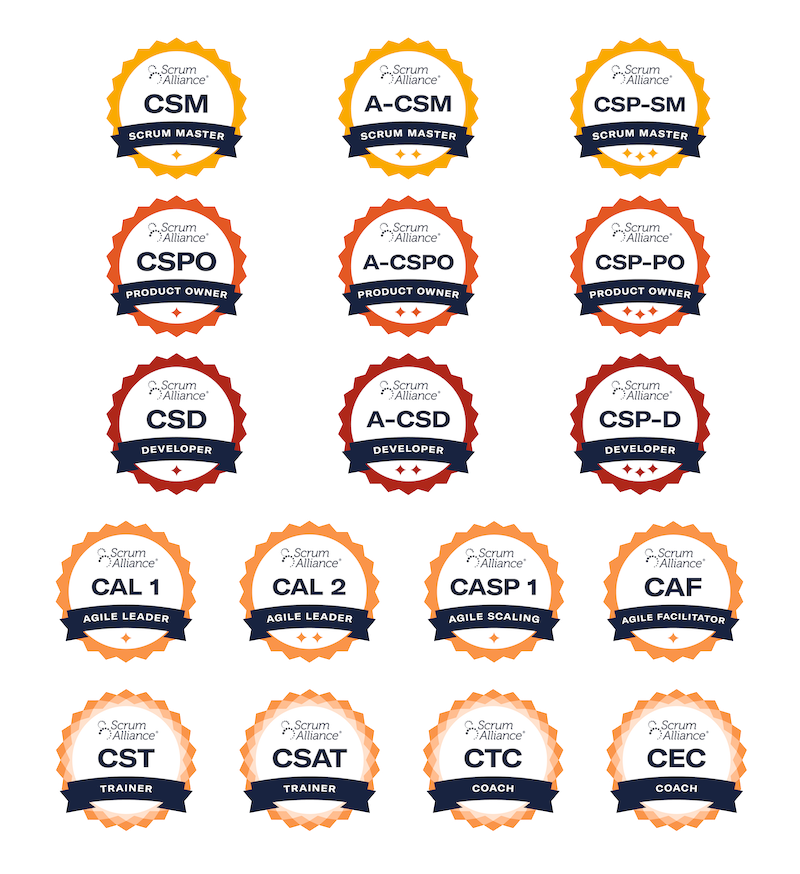Staff augmentation is a flexible outsourcing strategy that enables businesses to supplement their in-house teams with skilled professionals on a temporary or project-specific basis. This model allows companies to quickly acquire the expertise they need without the complexities and long-term commitments associated with traditional hiring. Unlike full outsourcing, where entire projects are managed externally, staff augmentation integrates external talent directly into an organization’s workflow, maintaining control over tasks and objectives while leveraging specialized skills.
Many businesses turn to staff augmentation to overcome skill shortages, meet project deadlines, and adapt to fluctuating workloads. One of the biggest advantages of this approach is the ability to access a global talent pool, allowing companies to find the right expertise regardless of location. Additionally, staff augmentation reduces recruitment and training costs, as professionals are already experienced in their respective fields. This model is particularly beneficial for technology-driven industries, where evolving demands require specialized knowledge in areas such as software development, cybersecurity, and data analysis.
Detailed Overview of Staff Augmentation
Before diving into the intricacies of selecting a staff augmentation contractor, it’s essential to understand the overall concept of staff augmentation. Let’s look in-depth at how staff augmentation works, its benefits compared to in-house hiring, and the key scenarios in which businesses should consider this model. By grasping these fundamentals, companies can make informed decisions when integrating external talent into their teams.
How Staff Augmentation Works
The staff augmentation process begins with identifying the specific skill gaps within an organization. Once the requirements are established, companies collaborate with augmentation providers to source candidates who match their needs. These professionals are then integrated into existing teams and work under the company’s direction while remaining employed by the provider. Since they operate as temporary extensions of the in-house workforce, they adhere to company standards, processes, and project goals while bringing fresh perspectives and expertise.
Key Benefits of Staff Augmentation vs. In-House Hiring
One of the most significant benefits of staff augmentation is its cost-effectiveness. Hiring full-time employees involves expenses such as salaries, benefits, and onboarding costs, whereas staff augmentation allows companies to pay only for the duration of the project. This model also provides scalability, enabling businesses to adjust their workforce as needed without the complexities of hiring or downsizing. Additionally, organizations can access niche expertise without committing to long-term employment contracts, ensuring they remain competitive in rapidly changing industries.
When to Consider Staff Augmentation for Your Business
Companies should consider staff augmentation when they need to scale their teams quickly, require specialized skills for short-term projects, or face difficulties hiring local talent. This model is particularly useful for IT and software development firms dealing with tight deadlines or rapidly changing technology landscapes. Additionally, businesses undergoing digital transformation initiatives can benefit from the flexibility of staff augmentation, allowing them to bring in experts without disrupting their existing workforce.
The Process of Selecting a Staff Augmentation Contractor
Choosing the right staff augmentation contractor is a critical step that can significantly impact the success of an organization’s projects. Let’s outline the essential steps businesses should take when selecting a contractor, from defining project needs to evaluating expertise and contract terms. A structured approach ensures that companies partner with reliable providers who align with their goals and expectations.
Defining Your Needs and Objectives
Choosing the right staff augmentation contractor begins with a clear understanding of business objectives and project requirements. Companies must identify the skills, experience, and timeline required for their initiatives. A well-defined scope ensures a smooth selection process and sets clear expectations for both parties.
Evaluating Technical and Cultural Fit
Beyond technical skills, assessing a contractor’s ability to align with the company’s culture is crucial. Professionals should not only have the necessary expertise but also integrate seamlessly into existing teams. Communication styles, work ethics, and adaptability are key factors in ensuring a successful collaboration.
Assessing Contractor Experience and Expertise
Reviewing the contractor’s track record, client testimonials, and case studies can provide insights into their reliability and performance. Companies should look for providers with experience in their specific industry, as this ensures familiarity with relevant challenges and best practices. Additionally, verifying certifications and conducting technical interviews can help assess the candidate’s capabilities.
Reviewing Contracts, Pricing Models, and Service Level Agreements (SLAs)
A well-structured contract is essential to avoid misunderstandings and mitigate risks. Companies should carefully review pricing models, payment terms, and service level agreements to ensure transparency. SLAs should outline performance expectations, response times, and dispute resolution mechanisms to protect both parties’ interests.

Image: Freepic
Best Practices for Successful Staff Augmentation
To maximize the benefits of staff augmentation, businesses must adopt best practices that ensure seamless integration and productive collaboration. Few essential strategies can help achieve this goal.
Setting Clear Expectations and Communication Channels
For staff augmentation to be effective, organizations must establish clear roles, responsibilities, and communication protocols. Project managers should define work expectations and deliverables, while team leaders should set up structured communication routines, such as daily stand-up meetings and weekly progress reviews. HR and IT teams should ensure that augmented staff have the necessary tools and access from day one. Open communication channels via Slack, Teams, or Zoom help align external professionals with internal teams and objectives.
Ensuring Seamless Integration with Internal Teams
Proper onboarding is crucial for a smooth transition. HR should provide orientation on company policies and workflows, while team leaders should introduce augmented staff to collaboration tools like Jira, Confluence, or GitHub. Assigning an internal mentor or buddy helps new team members quickly adapt to company culture and processes. Encouraging inclusive team meetings and involving augmented staff in brainstorming sessions fosters collaboration and builds trust.
Leveraging Agile Methodologies for Maximum Productivity
Using Agile frameworks can enhance productivity and collaboration. Scrum masters should conduct sprint planning and daily stand-ups to keep teams aligned. Developers and designers should follow iterative development cycles, ensuring continuous feedback and adjustments. Product managers should prioritize tasks using backlog grooming techniques, and QA teams should integrate automated testing to streamline deployments. This structured approach ensures that augmented staff contribute effectively without disrupting workflow.

Monitoring Performance and Providing Feedback
Regular performance evaluations and feedback sessions help ensure that augmented professionals meet project goals and quality standards. Team leads should conduct one-on-one check-ins to track progress and address concerns. HR should implement 360-degree feedback, gathering input from both internal and external team members. Constructive feedback fosters improvement, while recognizing achievements boosts morale and engagement. Clear KPIs and milestone tracking ensure that augmented staff remain aligned with business objectives.
Staff Augmentation in Real Life
Understanding how staff augmentation works in real-world scenarios can provide valuable insights for businesses considering this model. Here are some case studies from various industries, illustrating successful implementations of staff augmentation and the tangible benefits organizations have achieved.
ScienceSoft’s Team Augmentation for a TV Everywhere Company
A U.S.-based TV Everywhere company, working with major networks such as Fox, MTV, and BBC, faced significant challenges in rapidly developing high-quality streaming applications. The company struggled with a shortage of experienced software developers in its local market, making it difficult to scale its operations effectively. Additionally, its in-house team was already handling multiple projects, leading to resource constraints and slower development cycles. The company was also under pressure to meet tight deadlines due to new content distribution deals that required quick application releases.
To address these issues, ScienceSoft provided a dedicated team of experienced software developers, QA engineers, and DevOps specialists. This external team seamlessly integrated with the client’s existing workflows, enabling faster development cycles and improving overall efficiency. The augmentation approach allowed the company to access specialized talent without the long-term financial commitments of full-time hiring. With an Agile collaboration framework in place, communication between teams remained smooth, and iterative development ensured continuous progress.
As a result, the company successfully launched multiple high-performance streaming applications within the required timelines, meeting contractual obligations with network partners. This allowed them to expand their market reach and maintain their competitive edge in the industry.
Darby Consulting’s IT Staff Augmentation for an Oil and Gas Company
A rapidly expanding oil and gas company in the U.S. needed to enhance its IT department to support a growing number of complex software and hardware projects. However, the company faced several critical challenges. Its internal IT team lacked expertise in handling enterprise-level infrastructure upgrades, making it difficult to implement necessary improvements. As the company continued to scale, its IT staff became overwhelmed, leading to operational inefficiencies and delays in critical projects. Additionally, certain tasks required specialized skills in cybersecurity, cloud migration, and ERP systems, but hiring full-time experts for these roles was not financially feasible.
Darby Consulting addressed these challenges by providing highly experienced IT professionals, including project managers, system architects, and business analysts. The augmented staff worked closely with the in-house team to streamline IT system upgrades, significantly reducing downtime and improving system reliability. The team also enhanced cybersecurity measures to ensure compliance with industry regulations while implementing more efficient collaboration between IT and business teams. Additionally, they facilitated knowledge transfer sessions to ensure that the internal IT team could sustain the improvements in the long term.
Thanks to the staff augmentation approach, the company successfully completed its IT transformation, improving system security, operational efficiency, and scalability while avoiding the high costs and long timelines associated with full-time recruitment.
Andrews Cooper’s Engineering Staff Augmentation for Valve
Valve, a leading video game and digital distribution company, needed to expand its engineering team to support a high-priority project. The company faced several obstacles in scaling quickly, including the high cost and lengthy process of hiring full-time engineers. Additionally, the project required niche technical expertise that was not readily available within the existing workforce. Since the increased workload was temporary, hiring permanent employees would have been inefficient and financially impractical.
To overcome these challenges, Valve partnered with Andrews Cooper, which provided a team of highly skilled engineers through its Integrated Engineering Teams (IET) model. These external specialists brought immediate technical expertise and worked alongside Valve’s in-house engineers to ensure alignment with the company’s objectives. By leveraging staff augmentation, Valve was able to increase development capacity without making long-term hiring commitments. The flexible model allowed the company to scale its workforce based on project demands while maintaining cost efficiency.
As a result, Valve successfully completed the project within the required timeline, ensuring product quality and market readiness without overburdening its internal team. The collaboration demonstrated the effectiveness of staff augmentation in meeting short-term, high-stakes project needs while optimizing costs and resource allocation.
Risk Management in Staff Augmentation
While staff augmentation offers numerous advantages, it also comes with certain risks that businesses must proactively manage. This section highlights common pitfalls, security concerns, and collaboration challenges, along with strategies to mitigate these risks effectively.
Avoiding Common Pitfalls
Vendor lock-in can arise when a company relies too heavily on a single staff augmentation provider, limiting its ability to pivot or negotiate better terms. This often occurs when contracts are restrictive, knowledge transfer is inadequate, or replacement resources are hard to find. The best way to mitigate this risk is to diversify vendors, establish flexible contracts that allow smooth transitions, and document workflows internally. Failing to do so can result in cost inflation, operational disruptions, and difficulty in transitioning to new providers. However, when handled properly, businesses gain flexibility, cost control, and stronger negotiation leverage.
Knowledge gaps become a risk when external professionals complete their work without transferring expertise to in-house teams. This issue commonly arises when documentation is insufficient, knowledge-sharing sessions are skipped, or collaboration between augmented and internal staff is weak. Companies can address this risk by enforcing mandatory documentation policies, implementing structured knowledge-sharing meetings, and pairing external staff with internal team members for seamless knowledge retention. If ignored, businesses risk losing critical information, which can lead to inefficiencies, rework, and project delays. In contrast, proper knowledge management ensures long-term continuity and maximizes the value of augmented resources.
Ensuring Compliance and Data Security
One of the most significant risks in staff augmentation is unauthorized data access, which can lead to security breaches, intellectual property theft, or regulatory violations. This risk typically occurs when augmented staff are granted excessive access privileges or when security protocols are not strictly enforced. To manage this, companies must implement role-based access controls (RBAC), require NDAs, and conduct security awareness training. Without these measures, businesses face potential legal actions, financial losses, and reputational damage. On the other hand, robust security protocols enhance trust, protect sensitive assets, and ensure regulatory compliance.

Managing Time Zone and Collaboration Challenges
Time zone differences often lead to communication delays, misaligned expectations, and productivity bottlenecks. These challenges arise when there are no overlapping work hours, inconsistent meeting schedules, or unclear responsibilities. To address this, companies should establish core overlapping hours, use asynchronous communication tools, and set clear response-time expectations. If left unaddressed, poor collaboration can slow down project progress, increase frustration, and reduce overall efficiency. However, when managed correctly, global teams can work around the clock, accelerating development cycles and improving responsiveness.
Staff Augmentation Trends in 2025
The staff augmentation industry has evolved significantly, driven by technological advancements, shifting workforce expectations, and global economic changes. As businesses strive for agility, flexibility, and access to specialized talent, several key trends have emerged in 2025. Here are some of the most prominent tendencies shaping staff augmentation today:
Rise of AI-Enhanced Hiring and Skill Matching
AI-driven platforms are playing a crucial role in staff augmentation by streamlining the process of matching contractors with businesses. These tools analyze job requirements, candidate skills, and project needs, ensuring faster and more accurate hiring decisions. This trend emerged as companies sought ways to reduce hiring time and improve workforce efficiency. As AI continues to evolve, we can expect even more precise talent recommendations and predictive analytics for workforce planning.
Increased Demand for Niche and Highly Specialized Talent
Businesses are moving beyond general outsourcing to seek highly specialized contractors in areas such as AI, cybersecurity, blockchain, and data science. This shift has been fueled by rapid technological developments and the need for deep expertise in emerging fields. The outcome of this trend is a growing market for highly skilled independent professionals and boutique agencies focusing on niche expertise.
Blended Teams and Hybrid Work Models
The traditional division between in-house teams and external contractors is becoming increasingly blurred. Companies now integrate augmented staff into their core operations, creating seamless hybrid teams. This trend emerged from the need for more flexible workforce structures, especially after the global shift to remote work. In the future, businesses will likely invest in better collaboration tools and policies to ensure smooth integration between full-time employees and contractors.
Compliance and Data Security Challenges
With the expansion of remote and cross-border hiring, legal and security concerns have become a top priority. Companies are now more cautious about compliance with international labor laws, tax regulations, and data protection policies like GDPR. The rise of this trend stems from increasing cyber threats and regulatory scrutiny. As a result, businesses will need to adopt more robust compliance frameworks and secure digital work environments.
Shift Towards Outcome-Based Contracting
Traditional hourly or time-based contracts are being replaced by outcome-driven agreements, where contractors are paid based on deliverables and project milestones. This approach emerged as companies sought more accountability and efficiency in augmented staff engagements. The future will likely see wider adoption of smart contracts and blockchain-based payment solutions to enhance transparency in contractor agreements.
These trends indicate that staff augmentation is becoming more sophisticated, data-driven, and integrated into long-term business strategies. Organizations that adapt to these changes will be better positioned to leverage external talent effectively and gain a competitive edge in 2025 and beyond.
How to Start Using Staff Augmentation?
Staff augmentation is a powerful solution for businesses looking to scale efficiently, fill skill gaps, and remain competitive in an evolving market. By leveraging external talent, companies can accelerate project timelines, optimize costs, and access specialized expertise without long-term commitments.
To maximize success, businesses should carefully select their augmentation partner, ensuring alignment in skills, culture, and business objectives. Following best practices such as clear communication, seamless integration, and performance monitoring helps create a productive and collaborative work environment.
Mitigating risks through structured contracts, security protocols, and knowledge-sharing practices ensures a smooth engagement while protecting intellectual property and operational integrity. Real-world case studies demonstrate that staff augmentation, when implemented correctly, can drive efficiency and innovation across various industries.
If you have any questions or need guidance on how to implement staff augmentation effectively, book a consultation with a SliceIQ staff augmentation expert today. Our team is ready to help you find the best talent and build a successful, flexible workforce.

